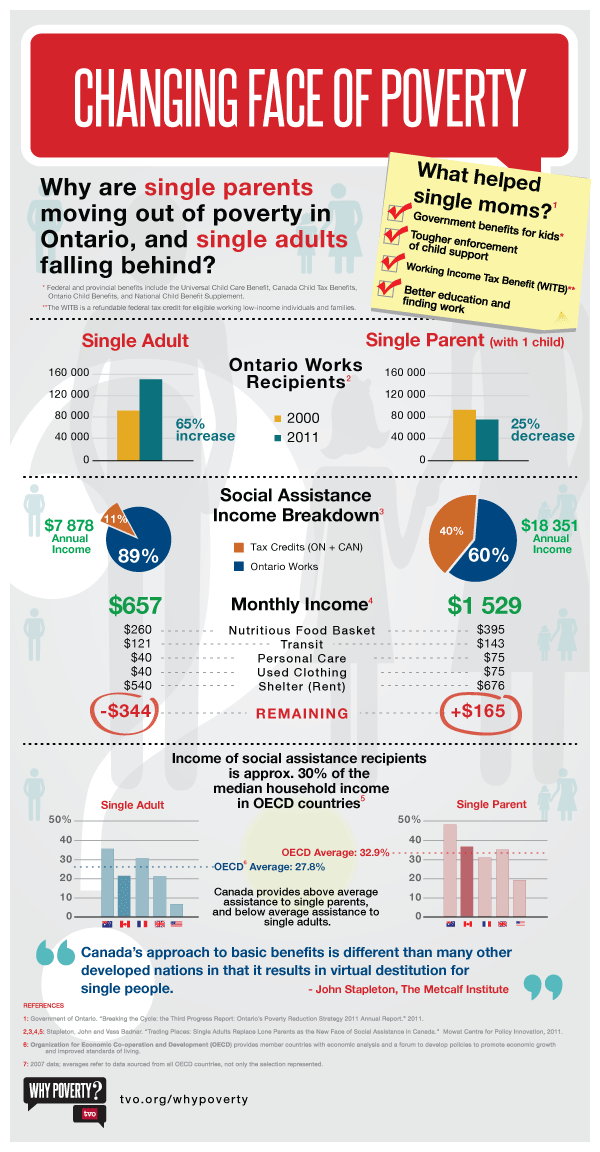Like homelessness, poverty has many faces. The below infographic, published as part of TVO’s Why Poverty series, takes a look at the changing face of poverty in Ontario. The piece draws heavily from a 2011 Mowat Centre report on how single adults are replacing single parents as the new face of poverty in Canada.
The infographic uses two main measures to compare levels of poverty between single adults and single parents in Ontario. The first measure compares the number of adults receiving social assistance through Ontario Works. From 2000 to 2011, there has been a 65% increase in the number of single adults who receive Ontario Works benefits and a 25% decrease in the number of single parents receiving Ontario Works benefits.
Many factors have contributed to the rise in the number of single adults receiving Ontario Works benefits. Shifting market trends have eliminated many well-paying full-time jobs and replaced them with precarious work in the new labour market. There has also been a shift in jobs to the service sector; many single adults living in poverty do not have the required experience and credentials to apply for these jobs.
The second measure takes a look at the difference in social assistance income breakdown between both groups. While tax credits account for just 11% of social assistance for single adults, tax credits account for 40% of social assistance for single parents. These figures suggest that on the provincial and federal level there needs to be more income, in the form of tax credits, transferred to single adults living in poverty.
Additional specialized education and employment services would also benefit single adults. These services can help individuals develop skills required to be competitive in today’s labour market. Just as economies and labour markets are prone to change, social assistance and service provision should meet the changing needs of Canadians. Investing more in services and supports for single adults can drastically improve their odds of moving out of poverty.
It should be made clear that these figures do not suggest that the province and the federal government need to be investing less into the lives of single parents. The rate of child poverty in Ontario remains very high for single parent homes with one child, where the rate of poverty is a startling 44%. Instead there should be continued investments made into their futures, as long-term investments into families simply work. Government benefits for children, specialized supports to help single parents receive a better education and find employment, and tougher enforcement of child support all contribute to helping single parent families move out of poverty.
Poverty and homelessness are inextricably linked. Without fighting poverty, we have little hope of fighting homelessness. If we want to make significant gains against poverty, we must energetically pursue efforts to improve the supports and services provided to those who need it most.


